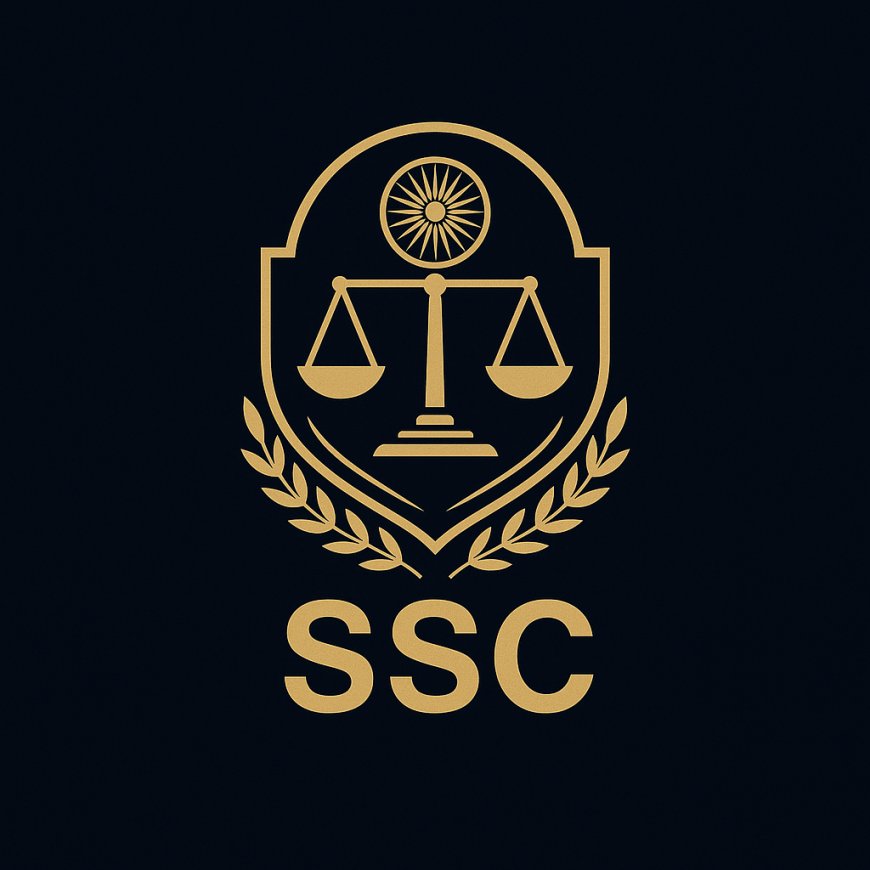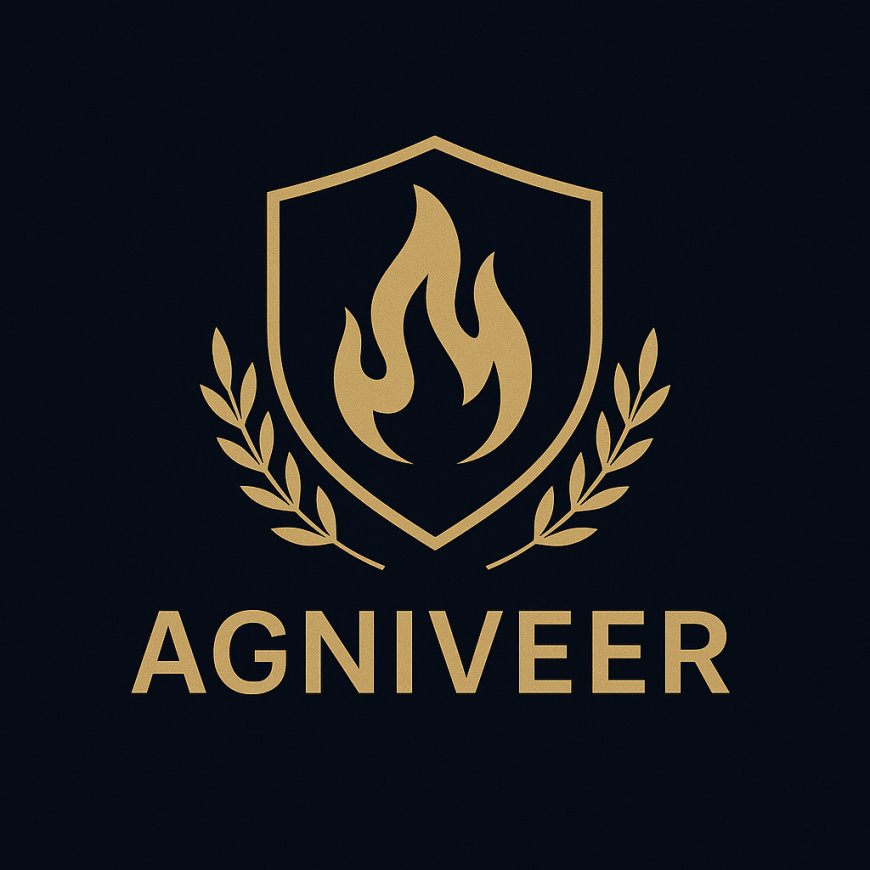Indian Fairs
1. Kumbh Mela / कुंभ मेला
|
पृथ्वी पर सबसे बड़े शांतिपूर्ण समागम के रूप में माना जाने वाला कुंभ मेला प्रयागराज (इलाहाबाद), हरिद्वार, नासिक-त्रिगंबक और उज्जैन के बीच घूमता रहता है, जहाँ हर छह साल में दो स्थानों पर "अर्ध" कुंभ और हर बारह साल में पूर्ण कुंभ होता है। तीर्थयात्री—अक्सर करोड़ों की संख्या में—बृहस्पति, सूर्य और चंद्रमा की सटीक ज्योतिषीय संरेखण के अनुसार निर्धारित महा शाही स्नान (महा डुबकी) में स्नान करने के लिए एकत्रित होते हैं, ताकि पापों का शमन हो और आध्यात्मिक पुण्य की प्राप्ति हो। विशाल अखाड़ों (तपस्वी शिविरों) के साथ, इस मेले में धार्मिक प्रवचन, सामूहिक भोजन (लंगर) और दर्जनों वर्ग किलोमीटर में फैले तंबुओं, विक्रेताओं और सांस्कृतिक मंडलियों का एक अस्थायी शहर भी शामिल होता है। |
|
KUMBH MELA 2025 |
Regarded as the largest peaceful gathering on Earth, the Kumbh Mela rotates among Prayagraj (Allahabad), Haridwar, Nashik–Trigambak and Ujjain, with a “Ardh” Kumbh every six years at two of the sites and a full Kumbh every twelve years. Pilgrims—often in the tens of millions—converge to bathe at the appointed Maha Shahi Snan (grand dip), timed by precise astrological alignments of Jupiter, the Sun and Moon, to cleanse sins and attain spiritual merit. Alongside massive akharas (ascetic camps), the mela features religious discourses, mass feedings (langars) and an impromptu city of tents, vendors and cultural troupes spread over dozens of square kilometers.
2. Sonepur Mela / सोनपुर मेला (Hajipur, Bihar)
|
गंगा और गंडक नदियों के संगम पर हर नवंबर में आयोजित होने वाला सोनपुर मेला एशिया के सबसे बड़े पशु मेले का खिताब अपने नाम करता है। पारंपरिक रूप से सम्राट चंद्रगुप्त मौर्य द्वारा हाथियों की खरीद से जुड़ा यह मेला आज भी हाथियों की नीलामी का आयोजन करता है—हालाँकि हाथियों के व्यापार पर लगे प्रतिबंधों के कारण अब जानवरों को बेचने के बजाय उन्हें दिखाने पर ज़ोर दिया जाता है। पशुओं के अलावा, यह मेला हस्तशिल्प, लोक कलाओं और आस-पास के मंदिरों में होने वाले भक्ति समारोहों का एक जीवंत बाज़ार है। |
Held each November at the confluence of the Ganga and Gandak rivers, Sonepur Mela claims the title of Asia’s largest cattle fair. Traditionally linked to Emperor Chandragupta Maurya’s reputed elephant purchase, today it still hosts elephant auctions—though curbs on elephant trading have shifted focus to show animals rather than sell them. Beyond livestock, the fair is a vibrant marketplace for handicrafts, folk performances and devotional gatherings at nearby temples.
3. Chitra Vichitra Fair / चित्र विचित्र मेला (Surendranagar, Gujarat)
|
घरसिया और भील जनजातियों के बीच यह वसंत ऋतु का समागम बिछड़े हुए परिजनों की स्मृति और आदिवासी जीवन की जीवंतता, दोनों का उत्सव मनाता है। यहाँ आने वाले लोग रंगों से सराबोर नृत्य मंडलियों, बारीक मनकों से जड़े आभूषणों और आदिवासी वस्त्रों की दुकानों को देखते हैं, जबकि पुजारी पवित्र 'चित्र' (चित्रित) और 'विचित्र' (मूर्तिकला) मूर्तियों को अनुष्ठानिक जुलूसों में ले जाते हैं। यह मेला दूरदराज के ग्रामीण समुदायों के लिए वार्षिक विवाह-सम्बन्ध और सामाजिक जुड़ाव का भी काम करता है। |
This springtime gathering among the Gharasia and Bhil tribes celebrates both the memory of lost kin and the vibrancy of tribal life. Visitors witness color-soaked dance troupes, intricately beaded jewelry stalls and stalls of tribal textiles, while priests carry sacred ‘Chitra’ (painted) and ‘Vichitra’ (sculpted) idols in ritual processions. The fair also serves as an annual matchmaking and social nexus for remote village communities.
4. Shamlaji Fair / शामलाजी मेला (Aravalli Hills, Gujarat)
|
मेश्वो नदी के किनारे स्थित प्राचीन शामलाजी मंदिर पर केंद्रित, कार्तिक (अक्टूबर-नवंबर) में तीन सप्ताह तक चलने वाला यह उत्सव "काले देवता" भगवान शामलाजी की पूजा करता है। तीर्थयात्री—जिनमें कई आदिवासी क्षेत्रों से भी आते हैं—नदी के पवित्र जल में स्नान करते हैं, गोबर के दीये चढ़ाते हैं और रात्रिकालीन भक्ति कार्यक्रमों में भाग लेते हैं। मंदिर के चांदी के आभूषण विक्रेता और लोक कला स्टॉल स्थानीय शिल्पकला को उजागर करते हैं। |
Centered on the ancient Shamlaji Temple by the Meshwo River, this three-week festival in Kartik (Oct–Nov) honors Lord Shamlaji, the “dark divine.” Pilgrims—including many from tribal belts—bathe in the river’s holy waters, present cow-dung lamps, and participate in nightly Bhakti performances. The temple’s silver-jewelry vendors and folk-art stalls highlight local craftsmanship.
5. Pushkar Fair / पुष्कर मेला (Pushkar, Rajasthan)
|
कार्तिक पूर्णिमा के अवसर पर लगने वाला पुष्कर, दुनिया के सबसे बड़े ऊँट और पशु बाज़ारों में से एक बन जाता है, जहाँ 2,00,000 से ज़्यादा पशुओं का व्यापार होता है। ऊँट दौड़ और मूंछ प्रतियोगिताओं के अलावा, पर्यटक राजस्थानी लोक-नृत्य मंडलियों, कठपुतली शो और पवित्र पुष्कर झील की आध्यात्मिक यात्राओं का आनंद लेते हैं, जिसकी पौराणिक कथा भगवान ब्रह्मा से जुड़ी है। यह मेला समर्पित शिल्प बाज़ारों और रात्रिकालीन सांस्कृतिक कार्यक्रमों के माध्यम से ग्रामीण कारीगरों को प्रोत्साहित करता है। |
Timed to Kartik Purnima, Pushkar transforms into one of the world’s greatest camel and livestock markets, with over 200,000 animals traded. Beyond camel races and mustache competitions, visitors enjoy Rajasthani folk-dance troupes, puppet shows, and spiritual tours of the sacred Pushkar Lake, whose legend ties to Lord Brahma. The fair promotes rural artisans through dedicated craft bazaars and nightly cultural programs.
6. Desert Festival / रेगिस्तान महोत्सव (Jaisalmer, Rajasthan)
|
हर फरवरी में रेत के टीलों के बीच आयोजित होने वाला यह तीन दिवसीय उत्सव मेहमानों को थार रेगिस्तान की संस्कृति से रूबरू कराता है: ऊँट पोलो, पगड़ी बाँधने की प्रतियोगिताएँ, लोक नृत्य प्रदर्शन और सैंडबोर्डिंग। चाँदनी रात में आयोजित होने वाले इस उत्सव का समापन राजस्थानी कलाकारों के लोक संगीत समारोह के साथ होता है, और बाज़ार में लगी दुकानों पर चमड़े की कारीगरी और शीशे से जड़े वस्त्रों जैसे स्थानीय शिल्पों की भी प्रस्तुति होती है। |
7. Kolayat Fair / कोलायत मेला (Bikaner, Rajasthan)
|
कार्तिक पूर्णिमा पर, हज़ारों की संख्या में लोग कोलायत झील पर एकत्रित होते हैं, जिसे कपिल मुनि द्वारा पवित्र माना जाता है। भक्तगण अनुष्ठानिक स्नान करते हैं, झील के किनारे तेल के दीपक जलाते हैं, और ऊँटों द्वारा खींची जाने वाली रस्साकशी और लौकी की नावों की दौड़ का आनंद लेते हैं। इस मेले में शेखावाटी चित्रकला शैलियों का प्रदर्शन भी होता है और पारंपरिक मिट्टी के बर्तनों और लोक चित्रकलाओं की बिक्री होती है। |
On Kartik Purnima, tens of thousands gather at Kolayat Lake, believed to be sanctified by sage Kapil Muni. Devotees perform ritual baths, light oil lamps around the lake’s shoreline, and celebrate with camel-drawn tug-of-war and gourd-boat races. The fair also showcases Shekhawati painting styles and sells traditional pottery and folk paintings.
8. Surajkund Crafts Mela / सूरजकुंड शिल्प मेला (Faridabad, Haryana)
|
1987 से, यह वार्षिक फरवरी आयोजन भारत की जीवंत शिल्प परंपराओं को आगे बढ़ाता रहा है, जिसमें पूरे उपमहाद्वीप और सहयोगी देशों के 1,000 से ज़्यादा कारीगर मुगल-शैली के वाटर टैंक एम्फीथिएटर में अपनी कला का प्रदर्शन करते हैं। यहाँ आने वाले लोग बुनाई, ब्लॉक-प्रिंटिंग कार्यशालाओं और पत्थर पर नक्काशी के लाइव प्रदर्शन देख सकते हैं, जबकि क्षेत्रीय नृत्य समूह और पाक-कला स्टॉल एक अखिल भारतीय संवेदी भोज प्रस्तुत करते हैं। |
Since 1987, this annual February event has championed India’s living craft traditions, hosting over 1,000 artisans from across the subcontinent—and partner nations—within a Mughal-style water tank amphitheater. Attendees can watch live weaving, block-printing workshops, and stone-carving demos, while regional dance ensembles and culinary stalls offer a pan-Indian sensory feast.
9. Gangasagar Mela / गंगासागर मेला (West Bengal)
|
हर मकर संक्रांति के दिन, अनुमानतः 1-2 मिलियन तीर्थयात्री बंगाल की खाड़ी में गंगा के मुहाने पर स्थित सागर द्वीप की यात्रा करते हैं। वे गंगा और समुद्र की संयुक्त पवित्रता की शक्ति की खोज करते हैं—ऐसा माना जाता है कि यह जीवन भर के पापों को धो देती है—और गंगा सप्ताह और रामायण के सामूहिक पाठ में भाग लेते हैं। इस अवसर पर नागा-साधुओं के जुलूस और नदी किनारे मंत्रोच्चार हिंदू धर्म के सबसे नाटकीय तीर्थयात्राओं में से एक बन जाते हैं। |
Each Makar Sankranti day, an estimated 1–2 million pilgrims journey to Sagar Island at the Ganges’ Bay of Bengal mouth. They seek the combined purifying power of the Ganga and the sea—believed to wash away lifetime of sins—and attend mass recitations of Ganga Saptah and Ramayana. The event’s stark Naga-sadhu processions and riverside chanting create one of Hinduism’s most dramatic pilgrimages.
10. Hemis Gompa Mela / हेमिस गोम्पा मेला (Ladakh)
|
प्रसिद्ध हेमिस मठ में हर गर्मियों में आयोजित होने वाला यह दो दिवसीय उत्सव पद्मसंभव (गुरु रिनपोछे) को भव्य चाम (मुखौटा) नृत्यों, गर्जनापूर्ण डुंगचेन (लंबे सींग) प्रदर्शनों और भिक्षुओं के मंडल आशीर्वाद के साथ सम्मानित करता है। ऊँचाई पर स्थित यह स्थान ट्रेकर्स को लहराते प्रार्थना झंडों और रंग-बिरंगे याक कारवां के दृश्य प्रदान करता है। |
Hosted every summer at the famed Hemis Monastery, this two-day festival honors Padmasambhava (Guru Rinpoche) with elaborate Cham (mask) dances, thunderous dungchen (long-horn) performances, and monks’ mandala blessings. The high-altitude setting provides trekkers with views of fluttering prayer flags and colorful yak caravans.
11. Chandrabhaga Mela / चंद्रभागा मेला (Konark, Odisha)
|
माघ सप्तमी (माघ मास की पूर्णिमा) को आयोजित होने वाले इस उत्सव में, तीर्थयात्री कोणार्क के सूर्य मंदिर के पास चंद्रभागा नदी में एकत्रित होते हैं। माना जाता है कि यहाँ सुबह-सुबह स्नान करने से मोक्ष की प्राप्ति होती है; पुजारी रेतीले घाटों पर वैदिक अग्नि-अनुष्ठान करते हैं, जबकि स्थानीय कारीगर पट्टचित्र और पास के मंदिर की पत्थर पर तराशी गई लघु प्रतिकृतियाँ बेचते हैं। |
Held on Magha Saptami (full moon of Magha month), pilgrims converge at the Chandrabhaga River near the Sun Temple of Konark. Early morning dips here are believed to grant moksha; priests conduct Vedic fire-rituals on sandy ghats, while local artisans sell pattachitra scrolls and stone-carved miniature replicas of the nearby temple.
12. Ambubachi Mela / अंबुबाची मेला (Guwahati, Assam)
|
कामाख्या मंदिर में हर मानसून के मौसम में, हज़ारों लोग उर्वरता की प्रतीक देवी कामाख्या को जल से भरे मिट्टी के घड़े अर्पित करके अंबुबासी मनाते हैं। भक्त मध्यरात्रि अनुष्ठानों में शामिल होते हैं, और प्रसिद्ध 'हिंगलाज' पशु बलि के बाद शाकाहारी प्रसाद और असमी रेशम और हाथ से बुने वस्त्रों की दुकानें लगती हैं। |
Each monsoon season at Kamakhya Temple, tens of thousands observe Ambubasi by offering water-filled earthen pitchers to Goddess Kamakhya, who symbolizes fertility. Devotees attend midnight rites, and famed ‘Hinglaj’ animal sacrifices give way to vegetarian prasads and stalls selling Assam silk and hand-loomed textiles.
13. Baneshwar Fair / बाणेश्वर मेला (Dungarpur, Rajasthan)
|
फरवरी-मार्च में मनाया जाने वाला यह तीर्थस्थल-केंद्रित मेला सोम नदी पर स्थित एक झरने से भरे मंदिर में भगवान शिव की पूजा-अर्चना के लिए आयोजित किया जाता है। आदिवासी भील और भिलाला समुदाय नदी के किनारे अनुष्ठानिक नृत्य करने, लाख की चूड़ियों का व्यापार करने और साथी तीर्थयात्रियों को मीठी जलेबियों का नाश्ता बाँटने के लिए एकत्रित होते हैं, जो आतिथ्य के स्थानीय रीति-रिवाजों को दर्शाता है। |
Celebrated in February–March, this shrine-centered fair honors Lord Shiva at a cascade-fed temple on River Som. Tribal Bhil and Bhilala communities gather to perform ritual dances at the riverside, trade lac bangles, and distribute breakfast of sweet jalebis to fellow pilgrims, underscoring local ethos of hospitality.




